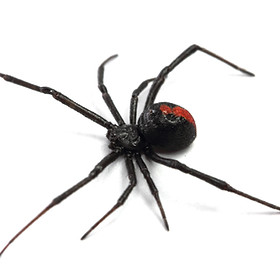


Identify: This arachnid is found all over Australia. Nonetheless, it is only the female with the distinctive red or orange stripe along its back and a pale or red underside which is most often encountered. The female ranges from 12-15mm in size, whereas the male by comparison, ranges between 3-4mm.
Habits: Redbacks favour man-made sheltered environments, such as rubbish piles, inside sheds, under outdoor furniture and barbecues, and roof voids, using these shaded areas to construct their webs. A Redback’s web contains a thickly spun ‘cone’, which is where the spider sits. Unlike the Sydney funnel web, Redbacks are not aggressive arachnids, with associated bites mostly occurring when the spider feels threatened. Often, this happens unintentionally when a person accidentally disturbs their web or nest.
When mating, a male Redback spider occupies his chosen female's attention by offering her his abdomen. He stands on his head and somersaults his abdomen towards her mouthparts. The female then squirts digestive juices onto the male's abdomen, starting to 'digest' him whilst he inserts his first palp. If he is not too weak, he will try and insert a second palp, all whilst she continues to 'digest' his abdomen. Most males don't survive this process, which seems to be unique to Latrodectus hasselti.
Lifespan: On average, female Redbacks mature in about four months. By comparison, the smaller male matures in approx. 90 days. Females may live for two to three years, whereas males only live for six or seven months.
Request a Booking
Identify: Found across Australia, this common arachnid is dark-grey to black in colour with a characteristic white cone on the end of its abdomen.
Habits: Inside the home, the White-Tailed is typically found on walls, and particularly in cool areas of the home with tiles, like bathrooms, kitchens and laundries. They also have a tendency to hide inside old shoes and items left on the floor, like clothes (jumpers, socks). Outside, these arachnids often hide under loose tree bark, logs and leaf litter. As is the case with Redbacks, the White-Tailed is not aggressive, but they will bite if touched and these bites can cause local pain and blistering.
Lifespan: Unconfirmed.
Request a Booking
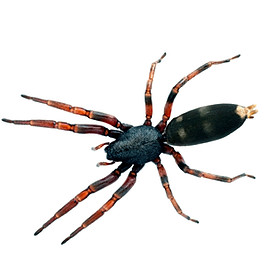


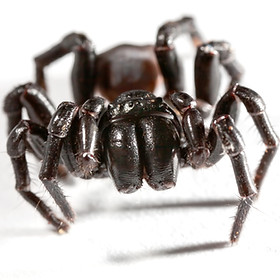


Identify: The Sydney Funnel-Web Spider is a medium to large spider, with a body length varying from 10-15mm. The males are more lightly built than females. Whilst their body colour varies from black to brown, the hard shell covering the front part of the body is always glossy and sparsely haired.
Habits: Indigenous to Sydney, the Funnel-Web favours moist, dark environments. They construct a funnel-shaped, webbed burrow (hence their name) and are most active during late summer and autumn when the male leaves the burrow in search of a female mate. They are particularly aggressive, with the male funnel web having a more toxic bite than the female.
Periods of continual wet weather and the use of insecticides can send these spiders indoors in search of shelter. These creepy crawlies love water and so are often found in swimming pools or garages. Footwear and clothing often offer great harbourages and so banging shoes together to ensure they are empty before putting on is a good practice to follow. The bite from a Sydney Funnel-Web is the most toxic and venomous in the world.
Lifespan: Female Funnel-Web spiders can live up to approx. 8 years whilst the males have significantly shorter lives.
Request a Booking
Identify: Mouse spiders are stout black spiders, varying from 10-35 mm body length and have distinctively bulbous head and jaw regions. They are often confused with Funnel-Web spiders. Depending on the species, of which there are eight in Australia, their abdomen is either uniform black or dark blue, or black with a light grey to white patch on top. A Mouse spider head is very wide, shiny, and black, sometimes with bright red or orange-red eye and jaw region. Female Mouse spiders are larger, stockier and more solid than the male Mouse spider, with a uniform black cephalothorax (fused head and thorax) and body.
Habits: Distributed throughout Australia, this arachnid is a ground-dweller that likes to live near the water. Unlike the funnel web, these creepy crawlies are not aggressive, but they do have strong fangs and so leave a painful bite.
Fortunately, with the introduction of anti-venom, there have been no recorded deaths from confirmed spider bites. It is also important to note that most arachnids only bite or appear aggressive when provoked or disturbed.
Lifespan: Unconfirmed.
Request a Booking
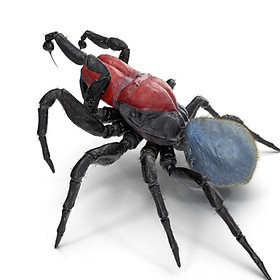


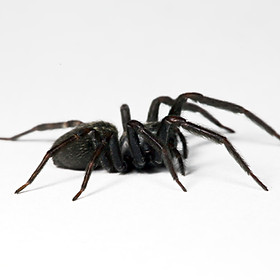


Identify: The female Black House Spider is dark brown to black in colour and ranges in size from about 15-18 mm long, while the male is only 8-10 mm long. This spiders's carapace and legs are dark brown to black whilst the abdomen is charcoal grey with a dorsal pattern of (sometimes indistinct) white markings.
Habits: The Black House Spider is found in eastern and southern Australia. Those webs you keep finding around your window frames, in the highest corners of your rooms and under protruding eaves are often constructed by the Black House Spider. Like the Huntsman Spider, these spiders feed upon household pests attracted to the light of windows and lamps, hence why you find their webs around your window frames. When not spinning their webs inside your home, they can be found constructing their webs in and around the loose bark of trees.
Lifespan: Maturing during the summer months, these spiders live for about two years. However, that lifespan can be cut short if these spiders come into contact with their natural predators: White-Tailed Spiders, parasitic wasps and flies.
Request a Booking
Identify: This spider is characterised by its very long legs and small body. They are cream to pale brown in colour, with some species having darker markings on their legs and abdomen than others, and range up to 9mm in length.
Habits: These annoying arachnids spin thin, tangled, loose webs, which are a nuisance to homeowners more than anything. They can be found throughout your home, spinning their webs in sheltered positions where they are unlikely to be disturbed, such as under furniture, behind doors, in the corner of the ceilings & in cupboards, in sheds, garages and under decks. The Daddy Long-Legs' successful use of human-made structures has made it one of the most common spiders in Australia. If disturbed in their web, the Daddy Long-Legs Spider responds by setting up a a very fast, spinning motion, becoming a blur to anyone watching.
There is a long-standing myth that the venom from the Daddy Long-Legs has the most potent, venomous bite, but that its fangs were incorrectly conceived, being too small & weak to penetrate human skin. This has since been debunked by several notable organisations. The myth probably grew from observations of the Daddy Long-Legs Spider killing and eating Redback Spiders.
Lifespan: Female Daddy Long-Legs Spiders can live up to three years. Males live a much shorter life of up to 12 months, as they die shortly after mating.
Request a Booking
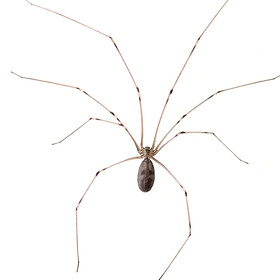






View Our Areas of Services
Abbotsford, Armadale, Auburn, Balwyn, Bayswater, Berwick, Blackburn, Boronia, Box Hill, Brighton, Burwood, Camberwell, Canterbury, Cranbourne, Cremorne, Croydon, Dandenong, Doncaster, Fairfield, Forest Hill, Frankston, Glen Iris, Glen Waverley, Hawthorn, Kew, Kilsyth, Langwarrin, Mitcham, Mooroolbark, Mount Waverley, Mulgrave, Narre Warren, Nunawading, Officer, Pakenham, Ringwood, Rowville, Toorak, Vermont, Wantirna, Windsor
Book A Pest Control Specialist